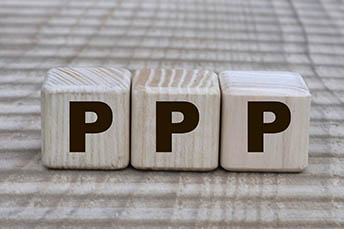The letter “P” is not used very often. In fact, it is only used 1.9% in texts, which is less frequent than “W” with 2.4% frequency and even “Y” with 2%. Yet, this letter has meant a lot to small businesses, in the form of PPP loans. The good news is that PPP funding is back! PPP has been an invaluable source of funding for many small businesses. The first round that ended in August 2020 provided 5.2MM loans worth $525B and helped cover 80% of small business employment. As our nation’s small businesses continue to struggle, the availability of additional funds is definitely welcome news.For this PPP reboot, the SBA split the program into First Draw Loans (for applicants that did NOT receive PPP funds last year) and Second Draw Loans (for applicants who already received a PPP loan in 2020). For both groups, applications will be accepted on or before March 31, 2021. For complete details, please visit the SBA PPP and Treasury PPP websites. Today, we share some of the highlights. Unless specifically noted, the information is for both First and Second Draw Loans.Eligible financial institutions. For the initial period, the SBA will only be accepting loan submissions from community financial institutions (“CFIs”), to give those lenders reaching under-served communities first priority. A CFI is considered: community development financial institution; minority depository institution; certified development companies, and microloan intermediaries. All other eligible lenders will be invited into the reprised program “shortly thereafter.” All new PPP lenders must register at http://www.sam.gov/. Additional eligible applicants. In addition to the list of applicable businesses for the first round of PPP, eligible applicants now include: 501 (c) 6; housing cooperatives; eligible news organizations, and destination marketing organizations. You may have more customers that now qualify with these new categories.
For Second Draw Loans, eligible borrowers may not have more than 300 employees (vs. 500 employees for First Draw Loan borrowers).Maximum loan amounts. Most applicants will have a maximum loan amount that is 2.5x their average monthly payroll costs, which can be based on either 2019 or 2020 payroll costs. However, for the Accommodation and Food Services sector (NAICS 72), the maximum loan amount can be 3.5x average monthly payroll costs.
First Draw Loans will continue to have a maximum cap of $10MM and Second Draw Loans will be capped at $2MM. The Second Draw Loan can be approved, but it cannot be disbursed until the First Draw Loan is fully disbursed.Forgiveness updates. Eligible expenses for forgiveness were expanded to include payroll costs, rent, mortgage interest, utilities, operations expenditures, property damage costs, supplier costs, and worker protection expenditures. Also, very notably, the SBA will no longer deduct the EIDL advance from the forgiveness amount. Borrowers may request that the SBA return the amount of an EIDL Advance that was previously deducted from loan forgiveness. The SBA is working on a simplified forgiveness application form for loans $150K and under. Covered period choice. The borrower can now choose a covered period between 8 and 24 weeks for which they will use PPP loan proceeds after disbursement. Hopefully, this will provide businesses with more flexibility in using their funds.You have been a tremendous support to your business customers. With the latest round of PPP funding, you can continue to help them, as the economy slowly ramps up.
For Second Draw Loans, eligible borrowers may not have more than 300 employees (vs. 500 employees for First Draw Loan borrowers).Maximum loan amounts. Most applicants will have a maximum loan amount that is 2.5x their average monthly payroll costs, which can be based on either 2019 or 2020 payroll costs. However, for the Accommodation and Food Services sector (NAICS 72), the maximum loan amount can be 3.5x average monthly payroll costs.
First Draw Loans will continue to have a maximum cap of $10MM and Second Draw Loans will be capped at $2MM. The Second Draw Loan can be approved, but it cannot be disbursed until the First Draw Loan is fully disbursed.Forgiveness updates. Eligible expenses for forgiveness were expanded to include payroll costs, rent, mortgage interest, utilities, operations expenditures, property damage costs, supplier costs, and worker protection expenditures. Also, very notably, the SBA will no longer deduct the EIDL advance from the forgiveness amount. Borrowers may request that the SBA return the amount of an EIDL Advance that was previously deducted from loan forgiveness. The SBA is working on a simplified forgiveness application form for loans $150K and under. Covered period choice. The borrower can now choose a covered period between 8 and 24 weeks for which they will use PPP loan proceeds after disbursement. Hopefully, this will provide businesses with more flexibility in using their funds.You have been a tremendous support to your business customers. With the latest round of PPP funding, you can continue to help them, as the economy slowly ramps up.




